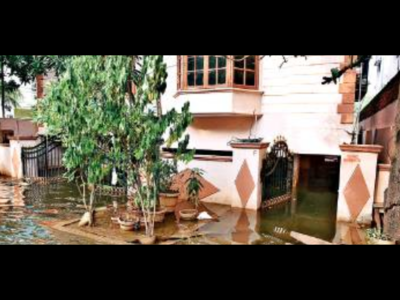The Hindu 23.04.2010
Elections to affect spending by local bodies
N.J. Nair
| Fund utilisation rate may dip from the 61 per cent recorded in 2009-10 |
Spending fell 28 percentage points in previous fiscal
Panchayat and Assembly polls in quick succession
THIRUVANANTHAPURAM: The local body elections in coming September and the Assembly elections due in May 2011 will affect absorption of Plan funds by the local self-government institutions during the current financial year.
The fund utilisation rate is, hence, likely to dip further below the 61 per cent registered during 2009-10.
The State Plan outlay has gone up from Rs.8,920 crore for the previous financial year to Rs.10,025 crore for 2010-11. But the elections are likely to affect the pace of implementation of Plan projects and thereby, absorption of funds.
The Plan review estimates on April 9 show that the block panchayats spent 70 per cent of the funds allocated to them during the last financial year; the grama panchayats, 62 per cent; the district panchayats, 60 per cent; the municipalities, 56 per cent; and the Corporations, 33 per cent.
From 87 per cent in 2008-09, fund utilisation has come down to 61 per cent during 2009-10, a 28 percentage point drop, despite the quarterly targets set for spending. The target is to spend 10 per cent of the funds by June and a cumulative 40 per cent by September and 70 per cent by December to ensure full utilisation by March 31.
Poor utilisation
Even without any major hindrances, the local bodies could not optimally utilise funds last year.
Barring a string of byelections in certain wards, nothing was there to divert the attention of the elected representatives from development works.
Being the last full year of their term, they had an opportunity to perform well and have something to show before the voters during the September elections. But they seemed to have been in an inertia, which had a telling effect on the fund utilisation rates.
Some say a section of men members showed a lack of enthusiasm following the decision to reserve 50 per cent of the seats for women, from the current 33 per cent, in the coming elections.
Men who cannot stand for re-election in the wards newly reserved for women did not feel the need to nurse their constituency and decided to take it easy at the fag end of the tenure. Bureaucratic ineptness worsened the situation.
Development activities will come to a halt once the model code of conduct for the elections comes into force.
After the elections, the new committees of the local bodies will hardly get time to plunge into business during the remainder of the financial year, more so when the Assembly elections are due in May. Most of the local body members hold important positions in their parties at the grassroots level and cannot shy away from electoral responsibilities in their groupings. In this context, fund utilisation will be a major casualty and is likely to dip below the 61 per cent, sources said.


